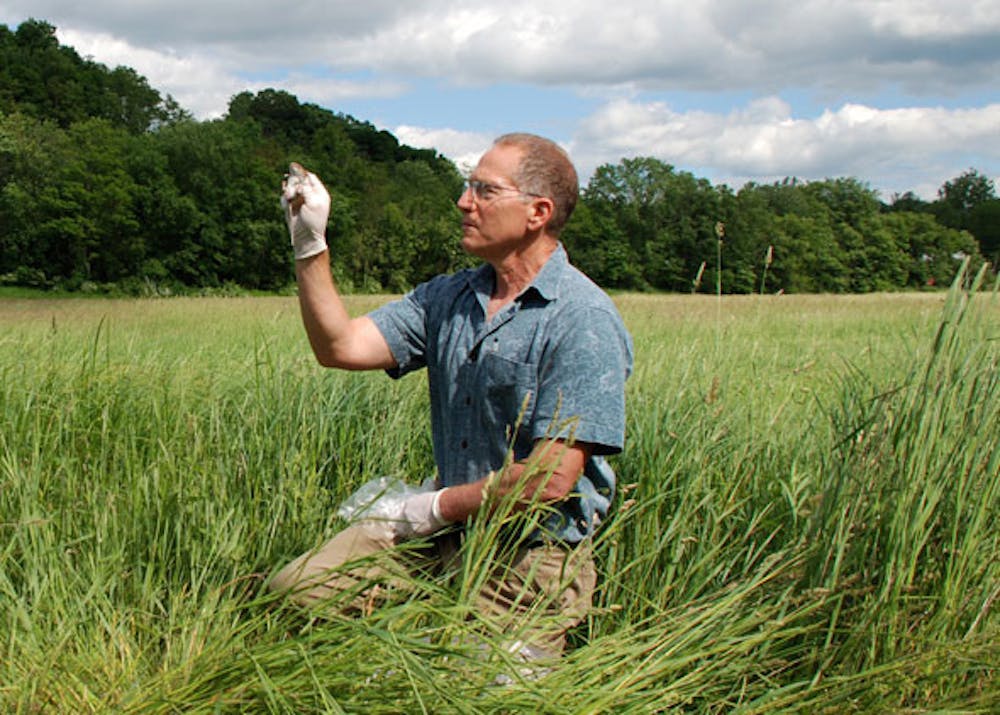When Dr. Richard Ostfeld, a senior scientist at the Cary Institute for Ecosystem Studies, asked the audience in McCardell BiCentennial Hall if they or someone they knew had ever been diagnosed with Lyme disease, over two-thirds raised their hands. This should come as no shock: With over 300,000 diagnosed cases per year, Lyme disease is the second most prevalent disease in the northeastern United States. What may be surprising, however, is how poorly Lyme disease is understood. Dr. Ostfeld is hoping to change this. On Friday, Oct. 30, he took part in the College’s George B. Saul Lecture Series to share his unique perspective on the disease and methods to combat its spread.
The number of reported cases of Lyme disease has grown from a few hundred a year to a few hundred thousand, and even that number is believed to be an underestimate. Dr. Ostfeld has devoted his research to investigating the ecological factors that influence the spread of Lyme disease. He has concluded that the conventional understanding of Lyme disease is woefully underdeveloped and should be replaced with a new paradigm that considers the diversity of species that are responsible.
There exist three stages in tick development: the larval stage, the nymphal stage and the adult stage. Lyme disease cannot be transmitted from parents to their progeny; thus, when a tick is born, it is not infected with the pathogen. As such, it is critical to look at the first host a larval tick feeds on, for it is here that it risks acquiring the pathogen. Ticks transmit the disease in their nymphal stage, when they feed on their second host. Conventional wisdom supports the idea that there is a relationship between the white tail deer population, a primary tick host, and the number of nymphal ticks infected with the pathogen, but several recent studies have challenged this paradigm.
One of these studies, as described by Dr. Ostfeld, occurred on Mohegan Island off the coast of Maine. Over the course of a few years, the people of the island hunted the deer population to zero. It was observed that the tick larvae population was also driven down to near zero. A second study took place in Cranes Beach, Massachusetts. In this scenario, when the deer population was driven to zero, the nymphal tick population also decreased – but after a certain point, it began to increase again, almost reaching its initial size. The primary difference between these two studies is that Mohegan Island housed no other possible carriers of the pathogen, while Cranes Beach was much more biologically diverse. This has led Dr. Ostfeld to conclude that species other than the white tail deer influence the size of the tick population.
In order to better understand how other mammals help spread Lyme disease, it is necessary to first recognize that some animals serve as better hosts for ticks than others. There are two types of hosts: amplifying hosts, which are great hosts for ticks, and protecting hosts, which effectively kill ticks that try to feed on them. Field studies by Dr. Ostfeld showed that the three most important reservoirs for Lyme disease are the white-footed mouse, the short tailed shrew and the eastern chipmunk. About half of the larval ticks that feed on an infected mouse survive to the nymphal stage. In comparison, the opossum is one of the best diluting species, and only 3.5 percent of ticks that feed on opossums survive to the next developmental stage. In fact, the average opossum kills about 5,600 ticks per week. These are important factors to consider when assessing the size of the tick population.
Dr. Ostfeld outlined a number of steps that can be taken to decrease the population of smaller mammals, which act as better reservoirs for infected nymphal ticks. As a forested area becomes smaller due to development and fragmentation, diversity decreases, and the community tends to become dominated by smaller mammals. Larger forested areas can support larger, predatory mammals, which have been found to suppress the tick borne disease risk. There are also certain types of fungi that act as naturally occurring pesticides against ticks, providing a more natural alternative to traditional, chemical-based tick deterrents. Places in which these fungi have been used have seen a 70 to 90 percent reduction in tick population.
While we have become better at preventing Lyme disease, it still remains one of the most rampant emerging infectious diseases in North America. Until future scientists develop a vaccine, it is advised that one wear appropriate clothing and check oneself for tickets after spending time outdoors.
Speaker Combats Lyme Disease Spread

Comments



